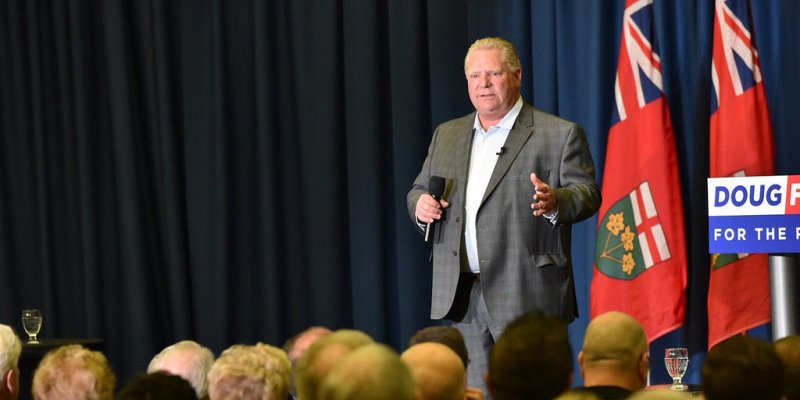Ford government should address Ontario’s structural problems in upcoming budget

The Ford government will table Ontario’s 2021 budget on March 24, at a time when there’s an overflowing plate of pressing policy issues. Along with continuing the fight against COVID, sorting the ongoing fallout in long-term care, promoting economic recovery and addressing solvency issues in the university sector, there’s also the matter of the province’s finances.
Indeed, there are probably not enough hours in a day for the government to deal with the onslaught of policy issues and their cost-benefit calculations. So, one must prioritize.
First is COVID-19, which is seeing a renewed rise in cases. Given the public fatigue with restrictions, it’s now a race between the virus and vaccinations. The vaccination process is ramping up, but speed is the question. To vaccinate 14 million Ontario residents (with just one dose) by the end of June requires dispensing nearly one million shots a week effective immediately. Ontario usually orders enough flu shots to vaccinate 30 to 40 per cent of its population every year with five to six million flu shots dispensed in just a few months. As such, it should be well within the province's technical ability to effectively double that rate in an emergency. Indeed, Premier Ford has affirmed the province’s ability to administer 4.8 million vaccine shots a month. Yet it’s currently running at about a quarter of that rate—or about 1.2 million shots a month—because in the end, you still need a consistent and abundant vaccine supply.
Second, there’s the economic recovery, both short and long-term. According to the Financial Accountability Office of Ontario (FAO), the broad-based lockdowns have resulted in a 5.9 per cent drop in Ontario real GDP in 2020, the largest annual decline in economic output on record. However, assuming vaccines are distributed to the general population over the course of 2021 and government lockdown restrictions are progressively eased (and this third wave does not spiral out of control), Ontario’s economy should rebound strongly. The latest labour force numbers from Statistics Canada suggest employment is rebounding, with 100,000 jobs created in February and the unemployment rate falling a full percentage point to 9.2 per cent.
However, most of Ontario’s February employment gains were in part-time work with notable increases in accommodation, food and retail trade. These are fragile gains for an economy that seems to always be teetering on the brink of yet another lockdown. Moreover, the long-term picture is more ambiguous. On the one hand, the U.S. economy is recovering robustly, and given Ontario’s integration of exports and production with American business and supply chains, one might expect smooth and sustained growth prospects once the pandemic is behind us. The province’s northern resource sector will certainly benefit from the uptick in commodity prices for minerals and lumber.
At the same time, the Biden administration is sending mixed signals on its degree of economic engagement with its traditional partners. One of President Biden’s first actions was an executive order imposing strict new made-in-America rules for U.S. government spending with limited exceptions, meaning the spillover from the U.S $1.9 trillion stimulus program could cut Canadian companies out of the procurement process.
And third and finally, there’s the elephant at the cabinet table—Ontario’s fiscal picture. According to figures released in the fall, the 2020-21 fiscal year was expected to see a $38.5 billion budget deficit followed by $33.1 billion in 2021-22 and $26.2 billion in 2022-23. This would see Ontario’s net debt climb to $472.9 billion from $335.2 billion in 2019-20. While one could opine that the scale of deficits and pace of debt accumulation is mainly a function of the short-term rise in spending needed to fight the pandemic and the short-term collapse in revenue, the government must provide some plan to balance the budget over the medium term. Next week’s budget is a good place to start.
In a sense, these three policy problems are all related. End the pandemic and the economy will recover. Once the economy recovers and growth resumes, government revenues will recover and it’s reasonable to expect the deficit to shrink. The problem is, this has been the standard way to deal with Ontario’s budgetary shortfalls—hope you can grow your way out of it. One might term it faith-based fiscal planning, and its track record has not been successful.
According to figures from Finances of the Nation, the last time Ontario’s budget yielded even a small surplus was in 2000-01. Since then, there’s been a budget deficit every single year with nominal net debt rising from roughly $130 billion to reach nearly $400 billion by 2020-21. Apparently, there’s never a good time to deal with Ontario’s long-term structural gap between revenues and spending. If its not a recession, it’s a global financial crisis. If it’s not a financial crisis, it’s weak economic growth. If it’s not weak growth, it’s a need to invest in the future given low interest rates. And now, with a pandemic, one does not have to be very imaginative to see where this is going.
In the absence of a concerted effort to address its structural fiscal gap, the pandemic will pass but Ontario’s net debt will continue to grow.
Author:
Subscribe to the Fraser Institute
Get the latest news from the Fraser Institute on the latest research studies, news and events.

